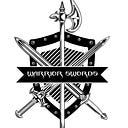Sword Making Guide: Master the Art of Forging a Sword
Introduction:
Swords have captivated humanity for centuries, symbolizing power, honor, and artistry. Swordsmithing, an ancient craft distinct from blacksmithing, involves forging long blades (over 24 inches) from various steels, including high-carbon and Damascus steel. This demanding art takes years to master and is considered one of the most dangerous forms of smithing. How Do Blacksmiths Make Swords? Learning from a professional is essential due to the inherent risks involved in the craft.” In this article, we explore the intricate process of sword-making, unveiling the science, beauty, and craftsmanship that transform steel into stunning weapons and pieces of art, deepening our appreciation for these Epic Fantasy Blades.
Forging Swords Throughout History:
The history of sword-making is a fascinating journey. Pattern-welded steel swords date back to the first millennium B.C., with early examples found in Celtic, African, Germanic, and Roman cultures. Chinese innovations spread to Korea and Japan, leading to the famed katanas of Japan’s Golden Era (1185–1333 A.D.). The Industrial Revolution saw traditional swordsmithing decline until a mid-20th-century revival by William Moran, who revived Damascus steel
techniques and founded the American Bladesmith Society in 1976. Swordsmithing’s evolution began in the Bronze Age, progressed with iron and steel innovations, and was marked by the shift from melee weapons to long-range arms in the 17th century.
How to Forge a Sword: Step-by-Step Sword Making Process
Planning Your Sword:Before you begin forging, careful planning is crucial. Here’s what you need to consider:
Design Selection:
- Historical References: Research popular sword designs from different cultures (e.g., katana, longsword, scimitar) to understand their unique features and histories.
- Choosing a Design: Consider your needs and skill level. Some designs are more intricate and suited for experienced bladesmiths, while others are simpler and ideal for beginners.
Material Selection:
- Types of Steel: High-carbon steel offers superior hardness and edge retention but is more prone to breakage. Low-carbon steel is softer and more flexible but doesn’t hold an edge as well. Choose the steel based on the type of sword you want to create.
- Acquiring Steel: Look for high-quality steel suitable for sword forging, such as 1095 high carbon steel, from metal suppliers, online stores, or recycling centers (ensuring they stock appropriate materials).
The Forging Process
Tools of the Trade:
- Essential Tools:
- Forge: Heats the steel to forging temperatures.
- Anvil: Provides a solid surface for shaping the steel.
- Hammers: Different hammers serve various shaping purposes.
- Tongs: Hold the hot steel securely while working on it.
Heating the Steel:
- Reaching Forging Temperature: Heat the steel to a fire or bright red glow on both ends (approximately 1,500 to 2,000 degrees Fahrenheit) to make it malleable for shaping.
- Maintaining Heat: Consistently return the steel to the forge to maintain proper temperature, ensuring even shaping and preventing cracks.
Shaping the Blade:
Master the basic forging techniques to create your blade:
- Drawing Out: Lengthen the steel by hammering it along its length.
- Tapering: Create a thinner point by progressively hammering the steel to reduce thickness.
- Beveling: Form the edge by hammering the sides of the blade at an angle.
Fullering and Crossguard:
- Fullering: Create grooves along the blade to reduce weight while maintaining strength.
- Crossguard: Shape and attach the crossguard to protect the wielder’s hands.
Heat Treating:
Heat treatment is crucial for a strong and flexible blade:
- Hardening and Tempering Process:
- Hardening: Heat the blade and rapidly cool it in oil or water to increase hardness.
- Tempering: Reheat the blade to a lower temperature to reduce brittleness while retaining hardness.
Finishing Touches
A. Grinding and Polishing:
- Grinding the Blade: Use a grinder to refine the blade’s shape, create the final edge, remove excess material, and smooth out rough surfaces.
- Polishing the Blade: Polish the blade using finer abrasives to achieve a smooth, shiny finish, enhancing both aesthetics and performance.
Finishing Touches
Creating the Hilt
The hilt provides a comfortable grip and protects your hand. Here’s how to craft it:
- Material Selection: Choose your hilt material based on aesthetics and functionality. Wood, leather, and metal are common options.
- Shaping and Assembling the Hilt: Shape the hilt components (grip, pommel, any decorative elements) to fit comfortably in your hand. Securely attach them to the blade using pins, tangs, or other suitable methods.
Safety Precautions
Swordsmithing is an inherently dangerous activity. Always prioritize safety by following these essential precautions:
- Wear appropriate personal protective equipment (PPE) including:
- Safety glasses to shield your eyes from sparks and hot metal fragments.
- Heat-resistant gloves to protect your hands from burns.
- Respirator to avoid inhaling harmful fumes.
- Work in a well-ventilated area to prevent fume buildup.
- Never forge alone. Have a spotter present in case of emergencies.
- Be aware of your surroundings and keep flammable materials away from your forge.
- Maintain your tools properly to ensure safe operation.
Conclusion
Swords are more than just weapons; they are testaments to human ingenuity and artistry. Forging a sword is a challenging but rewarding journey that demands dedication and respect for the craft. By understanding the history, materials, techniques, and safety considerations involved, you can gain a deeper appreciation for these historical and artistic pieces.
